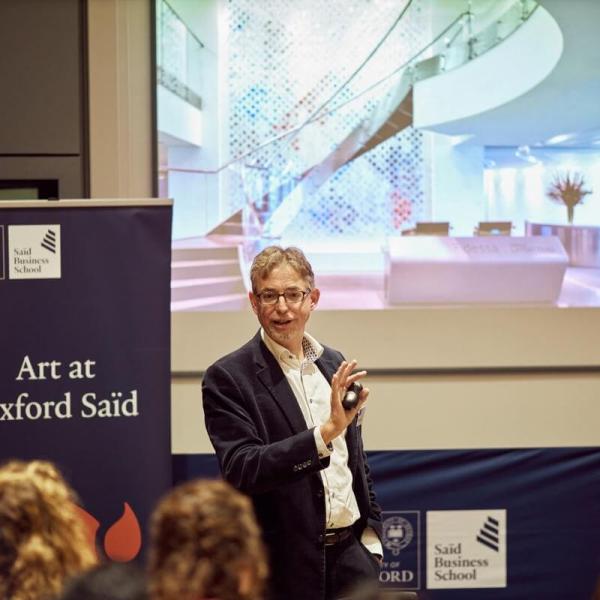About the event
Art in the office is not just a nice-to-have: it can actually improve productivity and employee engagement – as long as you do it right, that is.
With organisations increasingly signalling prudence and accountability to a wide variety of stakeholders, the days of indulging in a trophy corporate art collection are numbered. But that does not mean that art has no place in the modern workplace. Indeed, a 2012 survey by the company International Art Consultants revealed that not only did 90 per cent of respondents say that there was art in their workplaces, but 94 per cent of them felt that art made the place more ‘welcoming’. Another study, by Dr Craig Knight at Exeter University, demonstrated that workers in an ‘enriched environment’ could be up to 32 percent more productive than those in lean, or functional, environments.
Alex Heath, Chair of International Art Consultants, joined Knight to share best practice advice during an Art at Oxford Saïd seminar on 11 December 2019.

